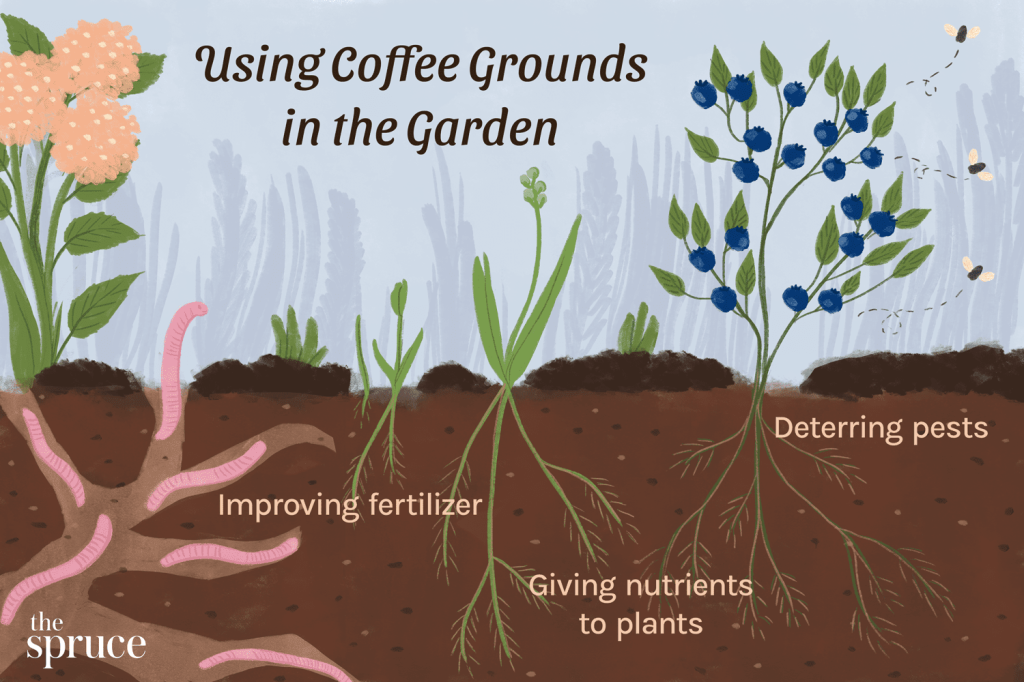Unlocking The Mystery: Are Coffee Grounds Considered Green Or Brown?
Are Coffee Grounds Considered Green or Brown?
Hello, Coffee Enthusiast! Today, we will delve into a fascinating topic that has been debated among coffee lovers and gardeners alike: are coffee grounds considered green or brown? Coffee grounds are a popular waste product that many people wonder how to dispose of properly. Understanding whether they are classified as green or brown is crucial for composting and gardening purposes. In this article, we will explore the characteristics of coffee grounds and determine their classification. So, let’s get started!
Introduction
1. What are coffee grounds?
2 Picture Gallery: Unlocking The Mystery: Are Coffee Grounds Considered Green Or Brown?
Coffee grounds are the remnants left after brewing coffee. They consist of the coffee bean residue, including the fine particles that get trapped in the filter or end up in the coffee cup. Most coffee grounds are thrown away as waste, but they have become increasingly popular for various other purposes.

Image Source: thespruce.com
2. Who uses coffee grounds?
Coffee grounds are utilized by a diverse range of individuals, including coffee enthusiasts, gardeners, and even beauty enthusiasts. Gardeners use coffee grounds as a natural fertilizer or composting material, while beauty enthusiasts incorporate them into DIY skincare products for their exfoliating properties.
3. When should coffee grounds be used?

Image Source: petpooskiddoo.com
Coffee grounds can be used throughout the year, depending on the purpose. In gardening, they can be added to compost or used directly as a mulch for plants. When it comes to skincare, coffee grounds can be used in homemade scrubs or masks whenever you feel the need to revitalize your skin.
4. Where can coffee grounds be obtained?
You can easily obtain coffee grounds from your daily coffee brewing routine. Simply collect the used coffee grounds after each brew. Additionally, some coffee shops or cafes may even give away their used grounds for free. This way, you can accumulate a sufficient amount for your gardening or skincare needs.
5. Why should coffee grounds be considered green or brown?
The classification of coffee grounds as green or brown is essential for composting purposes. Composting requires a balanced ratio of green (nitrogen-rich) and brown (carbon-rich) materials. Understanding whether coffee grounds fall into the green or brown category helps maintain the proper balance for optimal composting results.
6. How are coffee grounds classified?
The classification of coffee grounds as green or brown depends on their carbon-to-nitrogen ratio (C:N ratio). Green materials, such as grass clippings or vegetable scraps, have a high nitrogen content and a lower C:N ratio. Brown materials, like dried leaves or straw, have a higher carbon content and a higher C:N ratio. To determine where coffee grounds stand, we need to examine their C:N ratio.
Green or Brown: The Carbon-to-Nitrogen Ratio of Coffee Grounds
1. Carbon-to-Nitrogen Ratio of Coffee Grounds
Based on studies, coffee grounds have a carbon-to-nitrogen ratio of approximately 20:1, which falls within the range of green materials. This means that coffee grounds are considered green, nitrogen-rich matter.
2. Utilizing Coffee Grounds as Green Material
As coffee grounds are classified as green, they can serve as an excellent addition to your compost pile. When added to compost, they provide necessary nitrogen, which promotes microbial activity and helps break down organic matter efficiently.
3. Balancing Coffee Grounds with Brown Material
Though coffee grounds are green, it is crucial to balance them with brown materials to achieve a well-rounded compost mixture. Incorporating dried leaves, straw, or shredded paper helps maintain the ideal carbon-to-nitrogen ratio and prevents the compost from becoming too nitrogen-heavy.
4. Advantages of Using Coffee Grounds in Composting
Using coffee grounds in composting offers several advantages. Firstly, they enrich the compost with essential nutrients, including nitrogen, potassium, and phosphorus. Secondly, coffee grounds improve the soil structure, enhancing drainage and aeration. Lastly, they attract earthworms and beneficial microorganisms, which further contribute to the overall health of the compost and soil.
5. Disadvantages of Using Coffee Grounds in Composting
While coffee grounds are beneficial for composting, there are a few disadvantages to consider. Coffee grounds are acidic, and excessive use can alter the pH balance of the compost or soil. Therefore, it is recommended to use coffee grounds in moderation and balance their acidity with other materials like eggshells or wood ash.
Frequently Asked Questions about Coffee Grounds
1. Can I use coffee grounds directly in the garden?
Yes, coffee grounds can be used directly in the garden as a mulch or fertilizer. However, it is advisable to mix them with soil or other organic matter to prevent compacting and improve nutrient availability.
2. Do coffee grounds repel pests?
Coffee grounds are believed to repel certain pests, such as slugs and snails, due to their abrasive texture and strong scent. However, their effectiveness may vary, and additional pest control measures may be necessary.
3. Can coffee grounds be used for indoor plants?
Absolutely! Coffee grounds can be used for indoor plants as long as they are incorporated into the potting mix or used as a top dressing. They provide nutrients and improve soil drainage, leading to healthier plant growth.
4. Will coffee grounds attract ants?
Coffee grounds do not necessarily attract ants. However, if you notice ant activity near coffee grounds, it is advisable to move the grounds away from the affected area or try alternative methods to deter ants.
5. Can I reuse coffee grounds for brewing?
While reusing coffee grounds for brewing may seem economical, it is generally not recommended. Reused grounds can result in a weak and bitter-tasting brew. For the best flavor, it is advisable to use fresh coffee grounds for each brewing session.
Conclusion
In conclusion, coffee grounds are considered green materials due to their nitrogen-rich composition. They can be effectively used in composting and gardening practices, providing essential nutrients and improving soil structure. However, it is crucial to balance coffee grounds with brown materials and use them in moderation to prevent any adverse effects. Whether you are an avid gardener or a coffee lover looking to repurpose your grounds, incorporating coffee grounds into your composting routine can have numerous benefits for both your plants and the environment.
So, next time you enjoy your cup of coffee, remember the potential of those discarded grounds to enrich your garden and promote sustainable practices. Start composting with coffee grounds today and witness the incredible transformation they can bring to your plants and the planet!
Final Remarks
As with any gardening or composting practice, it is essential to experiment and adapt techniques to suit your specific needs. The information provided in this article serves as a general guideline, but individual results may vary. Additionally, if you have any specific health concerns or questions, it is advisable to consult a professional before incorporating coffee grounds or any other materials into your gardening or skincare routine. Happy composting and gardening!
This post topic: Green Coffee


